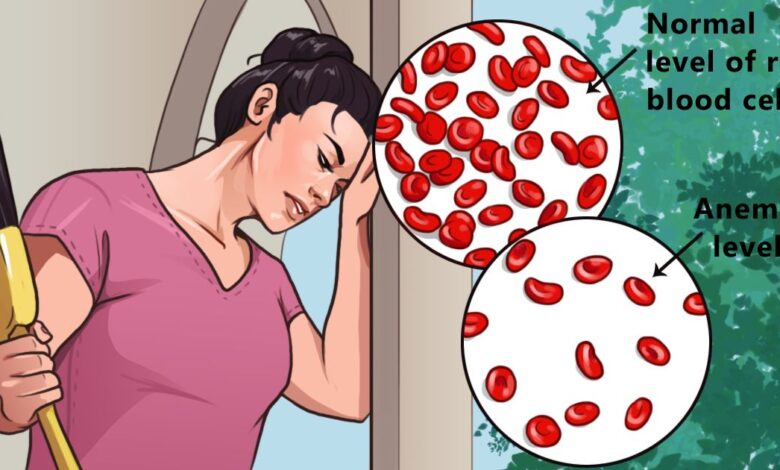Health
Headaches and fatigue are common symptoms of anemia. Here are 6 ways to treat it naturally


The body needs a certain number of red blood cells to function properly. If the number drops too low, a condition called anemia can occur. Red blood cells do many valuable things, but one of their most important jobs is to carry hemoglobin, which helps bind oxygen, according to WebMD.
If your red blood cell count drops too low, your organs don’t get enough oxygen to work optimally. This leads to symptoms such as headaches and fatigue. Anemia affects more than 3.5 million Americans. Some types of anemia can be treated naturally, but you should always talk to your doctor if you think you may have this condition.
According to Dr. Axe, one of the easiest ways to treat anemia is to include more high-protein foods in your diet. Foods high in iron include beans, vegetables (especially green leafy vegetables), beef, bison and liver.
According to the National Center for Biological Information, researchers have found that stress can reduce serum iron production, which in turn can lead to anemia or trigger anemia symptoms. One simple way to relieve and treat anemia symptoms is to reduce stress. These include meditation, walking, exercise, singing and sleep.
Patients with anemia should avoid some foods; LifeStrong reports that the foods listed can make symptoms worse. Foods that people with anemia should avoid or reduce include alcohol, tea, corn, white rice, white flour, and alcohol.
Body Ecology states that a major cause of anemia is poor intestinal health. If the intestines are not working properly, they cannot adequately absorb nutrients. A simple solution to this problem is to add probiotics to your diet. These include fermented foods (kimchi, miso, tempeh, sauerkraut), Greek yogurt, and cheese.
The main problem with anemia is that it can damage the immune system. This makes you more susceptible to various diseases. Increasing your vitamin C intake through supplements and including vitamin C-rich foods in your diet can help protect your immune system.
What are some types of anemia that can cause headaches?
There are several types of anemia that can cause headaches.
Iron deficiency anemia
Iron deficiency anemia (IDA) essentially causes headaches because the brain needs less oxygen to function optimally.
IDA is also associated with migraine headaches, especially in menstruating women.
Anemia due to vitamin deficiency
Similar to iron deficiency, anemia can occur when some vitamins, such as B-12 and folic acid, are deficient. Such anemia can also reduce oxygen levels in the brain and cause basic headaches.
Sickle cell anemia and thalassemia
Sickle cell disease or thalassemia is a type of anemia in which the red blood cells become more sticky, form clots, or take on an abnormal shape. These conditions can also cause headaches.
Anemia is a risk factor for the development of cerebral venous thrombosis (CVT), a rare disorder in which blood clots form in the veins of the brain. This disorder is also sometimes referred to as cerebral sinus venous thrombosis (CSVT).
What types of headaches can be caused by anemia?
Basic headache.
This is the type of headache that most people experience from time to time. These headaches can be caused by a variety of factors, including low oxygen levels in the brain.
Migraine Attacks
Migraine pain varies, but is usually described as a throbbing pain on one side of the head. Migraine attacks occur regularly and may have associated symptoms such as changes in vision and sensitivity to light and sound. They tend to be severe and persistent.
CVT Headaches
CVT is a blood clot that develops in a vein draining blood from the brain. The blockage causes blood to flow backwards, resulting in swelling and inflammation of the walls of the vein, which leaks blood to the brain and causes headaches.
Headache is the most common symptom of CVT, occurring in about 90% of patients.